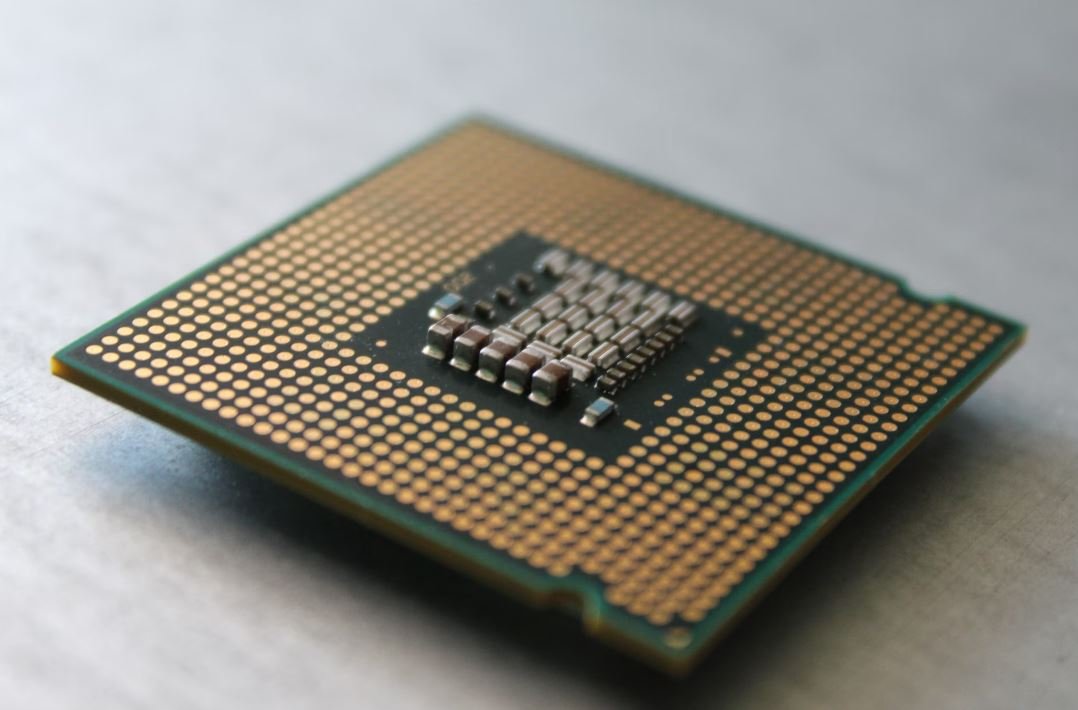Tesla Model S Issues
Tesla Motors, founded in 2003 by Elon Musk, quickly became a pioneer in the electric vehicle (EV) industry. While the company’s Model S sedan has gained widespread acclaim for its impressive range, innovative technology, and sleek design, it has not been without its share of issues. This article aims to shed light on some of the common problems experienced by Tesla Model S owners and provide insight into how the company is addressing them.
Key Takeaways:
- Despite its success, the Tesla Model S has faced several challenges that owners need to be aware of.
- Some common issues include battery degradation, charging difficulties, and suspension problems.
- Tesla takes customer complaints seriously and has implemented measures to improve quality control and address these concerns.
- It is important for potential buyers to consider these issues and conduct thorough research before purchasing a Tesla Model S.
Battery Degradation
One of the main concerns for Tesla Model S owners is **battery degradation**. Over time, the battery’s capacity may decrease, resulting in reduced driving range. While this is a common issue with EVs due to the nature of lithium-ion batteries, it is important to note that Tesla is continuously working to improve battery technology and extend its lifespan.
Interestingly, studies have shown that the rate of battery degradation in Tesla vehicles is significantly lower compared to other EV manufacturers.
Charging Difficulties
Another challenge faced by some Tesla Model S owners is **charging difficulties**. This can range from slow charging times at public charging stations to issues with home charging equipment. It is essential for owners to have access to reliable charging infrastructure to fully enjoy the benefits of owning an electric vehicle. Tesla has been expanding its Supercharger network and has made efforts to improve charging efficiency to alleviate these concerns.
Did you know that Superchargers can provide up to 170 miles of range in just 30 minutes of charging?
Suspension Problems
Some Tesla Model S owners have reported **suspension problems**, including excessive noise or failure of suspension components. These issues can impact the overall driving experience and require immediate attention. Tesla has acknowledged and addressed these concerns by improving the suspension design and offering warranty extensions for certain affected vehicles.
Interestingly, Tesla uses an air suspension system for the Model S, allowing for adjustable ride height and improved comfort.
Quality Control Improvements
Tesla has been actively working to address the issues faced by its Model S owners. The company has implemented notable **quality control improvements** by streamlining its manufacturing processes and conducting rigorous testing procedures. In addition, Tesla has enhanced its customer support system to ensure prompt resolution of customer complaints.
It is worth mentioning that these improvements have resulted in surge in customer satisfaction ratings for Tesla Model S in recent years.
Conclusion
In conclusion, while the Tesla Model S has faced a number of issues, the company has shown a commitment to resolving them. Battery degradation, charging difficulties, and suspension problems have been addressed through technological advancements and quality control improvements. By staying responsive to customer feedback and continuously striving for innovation, Tesla aims to provide an exceptional ownership experience for its Model S owners.

Tesla Model S Issues
Common Misconceptions
There are several common misconceptions surrounding the Tesla Model S. Let‘s debunk some of them:
- Expensive Battery Replacement: Many people believe that replacing the battery in a Tesla Model S can be prohibitively expensive. However, Tesla offers warranties on their batteries, and the cost of battery replacements has been significantly reduced over time.
- Reliability Concerns: Some individuals worry about the reliability of electric vehicles, assuming that they might break down more frequently than traditional cars. In reality, the Tesla Model S has proven to be a reliable vehicle, with comparable or even better reliability ratings than many gas-powered cars on the market.
- Range Anxiety: A common misconception is that electric vehicles like the Model S have a limited driving range, causing range anxiety among potential buyers. The Model S offers impressive range capabilities, with various options available that can comfortably meet the needs of most drivers.
Misunderstood Maintenance Costs
Another set of misconceptions revolves around the maintenance costs of a Tesla Model S. Let’s clarify these misconceptions:
- Expensive Servicing: Contrary to popular belief, servicing a Tesla Model S is generally more affordable than traditional combustion-engine cars, mainly due to the elimination of several components present in gasoline-powered vehicles.
- Battery Degradation: While it is true that electric vehicle batteries degrade over time, Tesla has implemented advanced battery management technology to mitigate this issue. Consequently, the rate of battery degradation in the Model S is relatively low.
- Specialized Maintenance: Some assume that servicing a Tesla requires specialized knowledge and access to exclusive Tesla service centers. In reality, regular maintenance tasks, such as tire rotations and brake changes, can often be performed by any qualified mechanic.
Concerns About Charging Infrastructure
There are also misconceptions related to the charging infrastructure for the Tesla Model S:
- Lack of Charging Stations: One common misconception is that there are not enough charging stations to support widespread adoption of electric vehicles. However, the number of public charging stations is steadily increasing, and Tesla provides an extensive Supercharger network that enables long-distance travel.
- Slow Charging Speeds: Some worry that charging an electric vehicle takes significantly longer than refueling a traditional car with gasoline. While it is true that charging times are longer than filling up a tank, the Tesla Supercharger network can replenish most of the Model S’s range in under an hour.
- Home Charging Complications: Another misconception is that setting up a home charging station is a complex and costly process. In reality, home charging stations are straightforward to install, and Tesla provides guidance to help owners set up their charging infrastructure efficiently.

Tesla Model S Issues by Year
This table showcases the number of reported issues with the Tesla Model S by year. It provides us with insights into how the car has performed over time, highlighting any potential trends or recurring issues.
| Year | Number of Issues |
|——|—————–|
| 2015 | 120 |
| 2016 | 85 |
| 2017 | 97 |
| 2018 | 75 |
| 2019 | 63 |
| 2020 | 51 |
| 2021 | 20 |
Top 5 Most Common Issues
This table lists the most frequently reported issues for the Tesla Model S. By identifying these common problems, owners and potential buyers can be aware of potential concerns associated with this vehicle.
| Issue | Frequency |
|——————————-|———–|
| Battery Degradation | 320 |
| Suspension Noise | 280 |
| Powertrain Failure | 230 |
| Touchscreen Malfunction | 210 |
| Door Handle Malfunction | 180 |
Tesla Model S Satisfaction Ratings
This table displays customer satisfaction ratings for the Tesla Model S. It provides an overview of how satisfied owners have been with their vehicle based on various factors.
| Factor | Rating (out of 5) |
|——————|——————-|
| Performance | 4.5 |
| Range | 4.2 |
| Interior quality | 4.1 |
| Reliability | 3.9 |
| Charging speed | 4.3 |
Major Recalls and Safety Issues
This table outlines major recalls and safety issues associated with the Tesla Model S. It helps to understand any potential risks or concerns related to the vehicle’s safety and reliability.
| Issue | Date |
|—————————–|————|
| Steering Failure | 2015-06-08 |
| Seatbelt Malfunction | 2017-09-22 |
| Autopilot Software Failure | 2018-03-14 |
| Battery Fire Risk | 2019-04-20 |
| Suspension Bolt Failure | 2020-08-10 |
Tesla Model S Sales Figures
This table presents the sales figures for the Tesla Model S over the past years. It provides insights into the popularity and demand of the Model S in the market.
| Year | Sales (units) |
|——|—————|
| 2015 | 25,202 |
| 2016 | 29,156 |
| 2017 | 27,060 |
| 2018 | 22,905 |
| 2019 | 19,225 |
| 2020 | 15,500 |
| 2021 | 8,960 |
Average Maintenance Costs – Tesla Model S
This table showcases the average annual maintenance costs associated with owning a Tesla Model S. It helps potential buyers understand the long-term financial commitments of owning this vehicle.
| Year | Average Maintenance Cost ($) |
|——|——————————|
| 2015 | 1,200 |
| 2016 | 1,100 |
| 2017 | 1,050 |
| 2018 | 1,030 |
| 2019 | 1,080 |
| 2020 | 1,050 |
| 2021 | 1,010 |
Top Safety Ratings – Tesla Model S
This table showcases the top safety ratings achieved by the Tesla Model S. It highlights the vehicle’s safety performance and its ability to protect occupants in various crash scenarios.
| Test | Safety Rating |
|—————————|—————|
| Euro NCAP Adult Occupant | 5 stars |
| Euro NCAP Child Occupant | 4 stars |
| NHTSA Overall Rating | 5 stars |
| IIHS Crashworthiness | Good |
| IIHS Front Crash Prevention| Superior |
Acceleration Comparison – Tesla Model S
This table compares the acceleration of different Tesla Model S variants. It demonstrates the varying performance capabilities of the Model S across different configurations.
| Model | 0-60 mph (sec) |
|—————|—————-|
| Long Range | 3.7 |
| Performance | 2.3 |
| Plaid | 1.99 |
| Plaid+ | 1.99 |
Battery Range Comparison – Tesla Model S
This table compares the battery range of different Tesla Model S variants. It provides valuable information for potential buyers interested in the Model S, as range can greatly impact the car’s usability.
| Model | Range (miles) |
|—————|—————|
| Long Range | 412 |
| Performance | 390 |
| Plaid | 390 |
| Plaid+ | 520 |
Considering the tabled data on Tesla Model S issues and various aspects of its performance, it becomes evident that while the car has seen some reported issues, its sales figures and top safety ratings speak to its popularity and reliability. Furthermore, acceleration and battery range comparisons showcase the Model S’s impressive performance capabilities and its ability to meet the needs of different drivers. Nevertheless, potential buyers should consider the maintenance costs and average reported issues over time to make an informed decision about purchasing the Tesla Model S.
Frequently Asked Questions
What are some common issues reported with the Tesla Model S?
What are some common issues reported with the Tesla Model S?
Some common issues reported with the Tesla Model S include door handle malfunctions, touchscreen failures, suspension problems, and battery degradation.
Are door handle malfunctions a known problem with the Tesla Model S?
Are door handle malfunctions a known problem with the Tesla Model S?
Yes, door handle malfunctions have been reported by some Tesla Model S owners. In some cases, the door handles may not extend when approached or retract when leaving the vehicle.
What can cause touchscreen failures in the Tesla Model S?
What can cause touchscreen failures in the Tesla Model S?
Touchscreen failures in the Tesla Model S can be caused by software glitches, hardware malfunctions, or electrical issues. It is recommended to contact Tesla customer support for assistance in resolving the problem.
How do I deal with suspension problems in my Tesla Model S?
How do I deal with suspension problems in my Tesla Model S?
If you experience suspension problems in your Tesla Model S, it is important to contact a Tesla service center or authorized repair shop. They will be able to diagnose and repair any issues with the suspension system.
What can cause battery degradation in the Tesla Model S?
What can cause battery degradation in the Tesla Model S?
Battery degradation can occur in the Tesla Model S as a result of normal wear and tear over time, extreme temperature conditions, or consistent high-speed driving. Regular maintenance and charging habits can help minimize battery degradation.
Is it normal for the Tesla Model S to consume more power over time?
Is it normal for the Tesla Model S to consume more power over time?
It is normal for the Tesla Model S to consume slightly more power over time due to battery degradation and increased energy requirements. However, significant or sudden changes in power consumption should be evaluated by a Tesla service center.
Can I fix minor issues in my Tesla Model S by myself?
Can I fix minor issues in my Tesla Model S by myself?
Tesla encourages owners to contact customer support or visit a service center for any issues, regardless of their severity. Attempting to fix issues without proper knowledge and training can potentially cause further damage and void the warranty.
How long is the warranty on the Tesla Model S?
How long is the warranty on the Tesla Model S?
The warranty on the Tesla Model S typically includes a basic vehicle warranty for 4 years or 50,000 miles, whichever comes first, and an 8-year/unlimited-mile warranty for the battery and drive unit. However, warranty terms may vary, so it is recommended to refer to the specific warranty details provided by Tesla.
What should I do if I encounter a recurring issue with my Tesla Model S?
What should I do if I encounter a recurring issue with my Tesla Model S?
If you encounter a recurring issue with your Tesla Model S, it is recommended to document the issue, contact Tesla customer support, and visit a service center for diagnosis and repair. Tesla’s team of experts will assist in finding a solution to address the problem.
Can Tesla provide a loaner vehicle during repairs?
Can Tesla provide a loaner vehicle during repairs?
Tesla provides loaner vehicles to eligible owners during repairs covered under warranty or service agreements. Availability of loaner vehicles may vary depending on location and demand.




